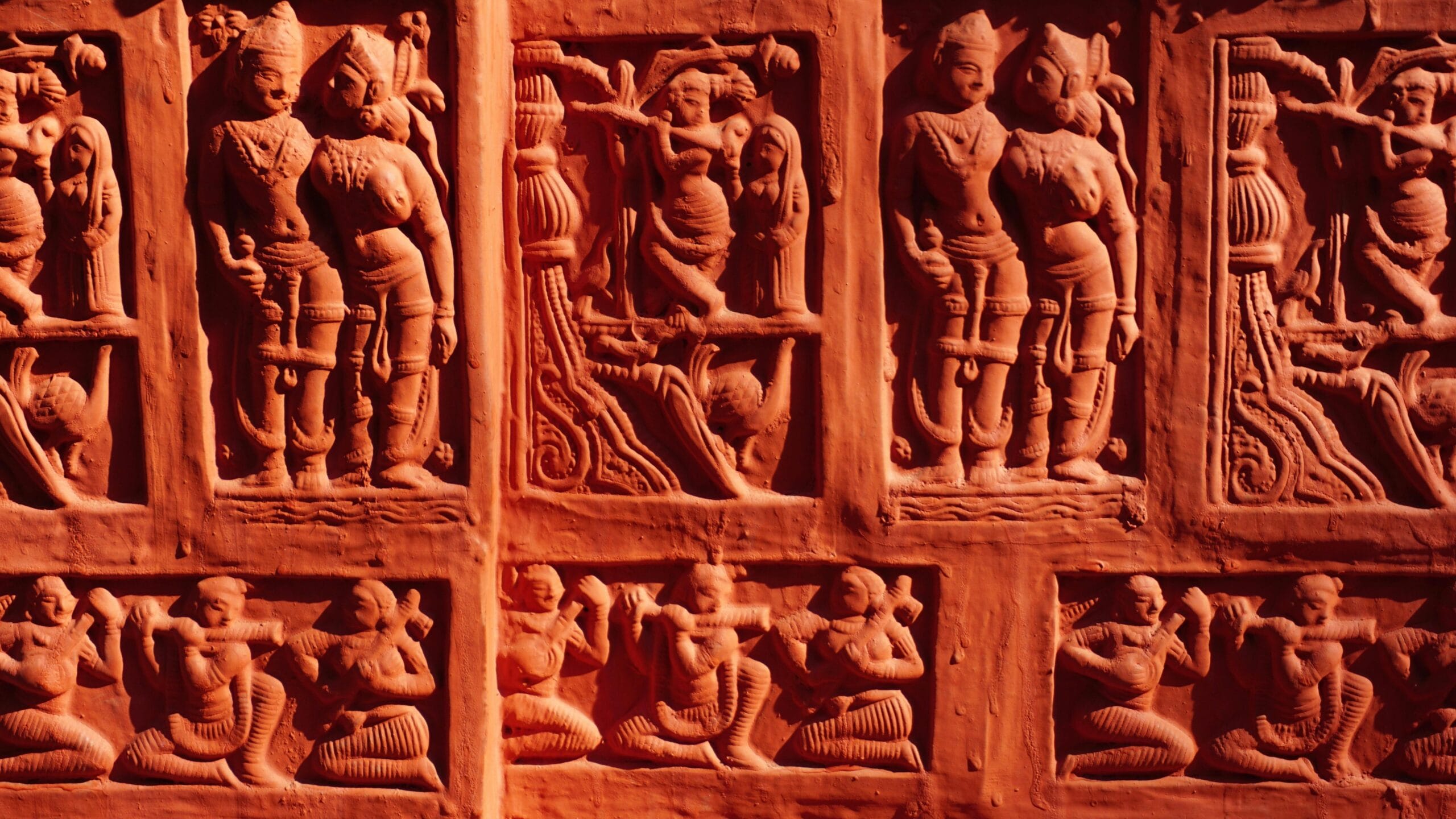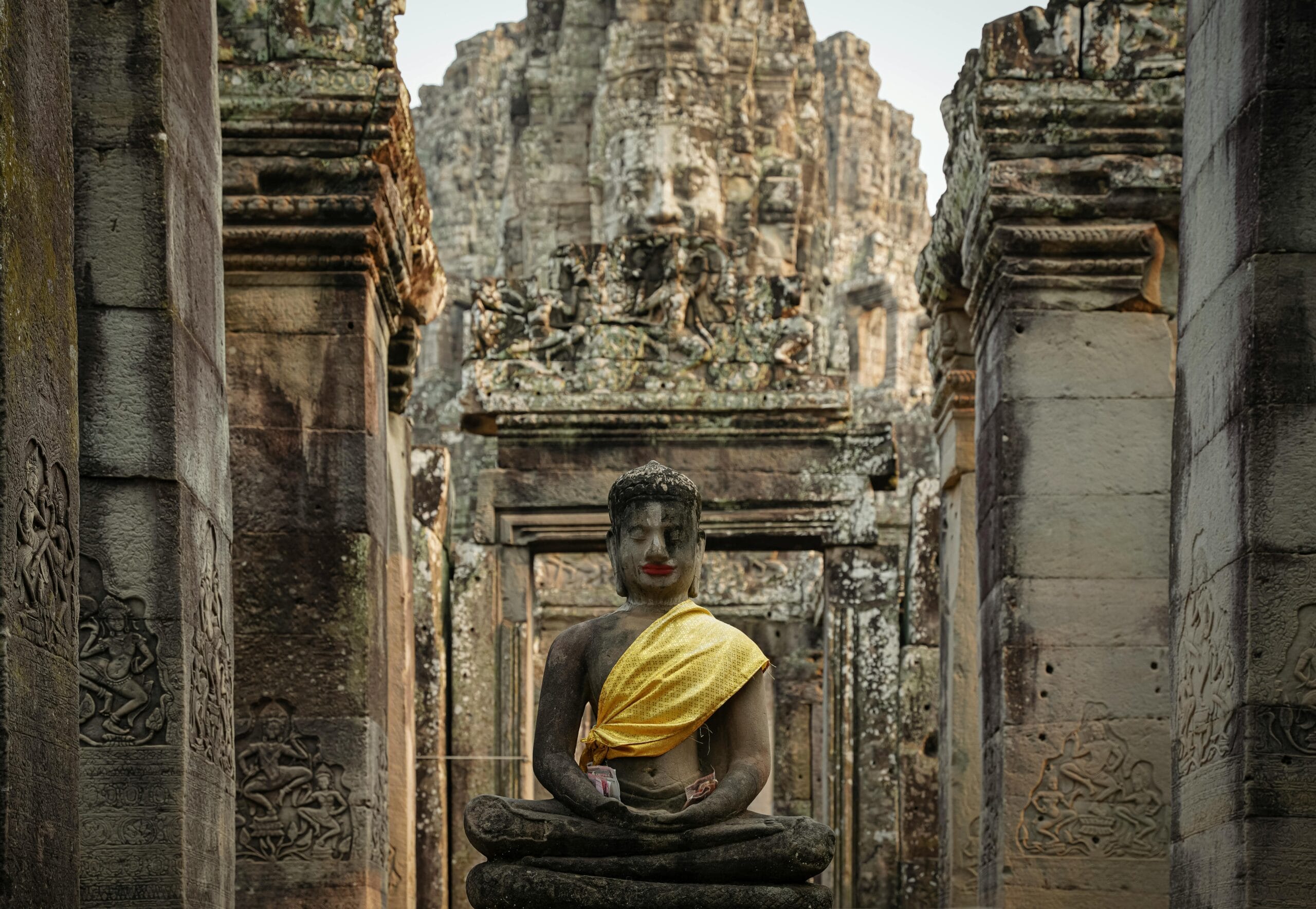Introduction: The Assault on Dr. Ambedkar’s Legacy
In the annals of Indian intellectual discourse, few figures have been as polarizing and as fiercely debated as Dr. B.R. Ambedkar. A towering personality, a legal luminary, an economist, and a social reformer, Dr. Ambedkar remains an icon for millions, particularly within the Dalit community. However, his legacy has also been a target for relentless criticism, often from those who view his contributions through a specific ideological lens. Arun Shourie’s book, ‘Worshipping False Gods: Ambedkar And The Facts Which Have Been Erased’, published in 1997, stands out as a particularly scathing and, arguably, one of the most significant attempts to undermine Dr. Ambedkar’s stature and contributions.
This article delves into the core of Shourie’s critique, positing that the book fundamentally misrepresents Ambedkar’s life, his political struggles, and his profound impact on Indian society and its Constitution. The work has been widely disseminated and is frequently cited by various online platforms and commentators, often without critical engagement, to perpetuate a distorted narrative about Dr. Ambedkar.
Table of Contents:
- The Author: Arun Shourie and His Ideological Stance
- The Genesis of 'Worshipping False Gods'
- Shourie's Critique of Ambedkar's Political Stance
- Revisiting Ambedkar's Role in the Freedom Struggle
- Analyzing Shourie's Allegations on Caste and Hinduism
- Ambedkar's Electoral Performance: Context and Causality
- Addressing Shourie's Allegations on the Constitution
- Ambedkar's Conversion to Buddhism: A Political Act?
- Ambedkar's Stance on Partition
- Shourie's Allegations of Corruption and Misuse of Funds
- Debunking the "British Stooge" Narrative
- Analyzing Shourie's Views on the Bengal Famine and 'Quit India' Movement
The Author: Arun Shourie and His Ideological Stance
Arun Shourie, a former BJP leader, is widely recognized as an economist, journalist, and author. His career has spanned prestigious media organizations like The Indian Express and The Times of India. [insert image here – 0.25] He served as a Union Minister for Communications and Information Technology during the BJP-led government from 1998 to 2004. Shourie has been honored with several accolades, including the prestigious Ramon Magsaysay Award and the Padma Bhushan.
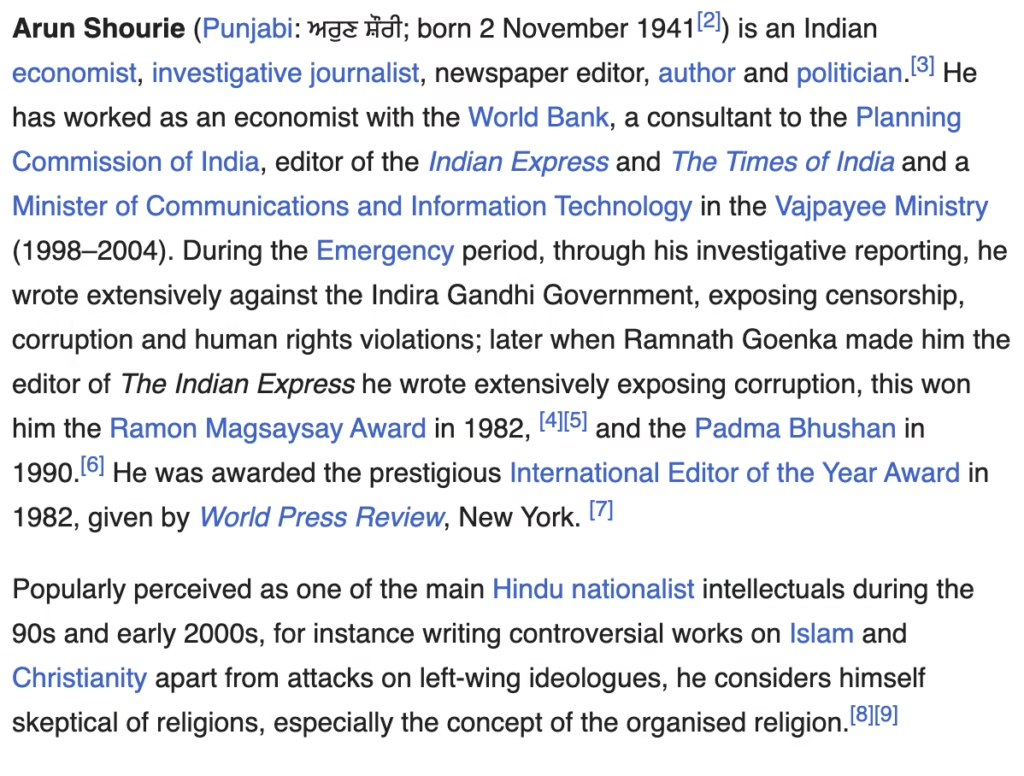
He is often characterized as a Hindu nationalist intellectual, known for his critical writings on various religious and ideological streams, particularly those perceived as non-Hindu. His background includes an education from esteemed institutions like St. Stephen’s College and Modern School, and he holds a doctorate.
Notably, Shourie’s personal background, characterized by privilege with an IAS officer father, has led some critics to suggest he may lack a nuanced understanding of the systemic oppression and lived realities of caste-based discrimination faced by marginalized communities in India, a perspective that, in turn, influences his critical stance on Ambedkar.
The Genesis of ‘Worshipping False Gods’
Published in 1997, ‘Worshipping False Gods’ emerged at a time when the discourse around Ambedkar was gaining significant momentum, especially following the implementation of the Mandal Commission recommendations. The book, which is extensive in its critique, delves into various aspects of Dr. Ambedkar’s life and work. Shourie’s central thesis appears to be that Ambedkar was a divisive figure, driven by personal ambition and a hatred towards Hinduism and its traditions.
The book extensively quotes various historical figures and documents, but critics argue that these are often cherry-picked, decontextualized, or presented with a biased interpretation to fit Shourie’s narrative. The aim, as perceived by many, is to diminish Ambedkar’s status as a social reformer and a champion of the oppressed, portraying him instead as an anti-national and opportunistic politician. The book has found fertile ground among those seeking to challenge the Ambedkarite movement and its foundational principles.
Shourie’s Critique of Ambedkar’s Political Stance
Election Failures and Political Realities
One of the recurring criticisms leveled by Arun Shourie against Dr. Ambedkar is his perceived inability to win elections independently and the electoral failures of his political parties. Shourie points out that Ambedkar himself never won a direct election, primarily relying on nominated seats in the Rajya Sabha, which he entered through the BJP’s backing.
This is contrasted with Ambedkar’s own criticisms of others who failed to win elections. However, Shourie’s own political career also warrants examination. While he served as a nominated Member of Parliament and later as a Union Minister, his direct electoral success is also absent.
This aspect of Shourie’s critique often overlooks the complex political landscape of the time, particularly the systemic disadvantages faced by Dalit leaders and their nascent political organizations in securing electoral victories against deeply entrenched caste-based political structures and parties like the Congress.
The nomination to the Rajya Sabha, while constitutionally valid, was often seen by critics as a move that allowed Ambedkar to participate in national politics without the direct electoral struggles that were heavily influenced by caste dynamics and electoral malpractices.
Allegations of Anti-Nationalism and Collaboration with the British
A significant portion of Shourie’s critique centers on the allegation that Dr. Ambedkar was anti-national and collaborated with the British. Shourie argues that Ambedkar did not actively participate in the Indian freedom struggle and that his engagement with the British administration was self-serving.
The book suggests that Ambedkar was critical of the Indian nationalist movement, particularly figures like Mahatma Gandhi and the Indian National Congress.
This narrative often selectively highlights Ambedkar’s disagreements with the Congress and Gandhi, while downplaying his substantial contributions to the political and social reforms that were essential for India’s true liberation. For instance, Ambedkar’s work in advocating for labor rights.
Revisiting Ambedkar’s Role in the Freedom Struggle
Defining ‘Freedom Struggle’: Ambedkar’s Perspective
Arun Shourie’s assertion that Dr. Ambedkar did not participate in the freedom struggle needs to be examined in the context of what constituted ‘freedom’ for Ambedkar. For Ambedkar, freedom was not merely the transfer of political power from British to Indian hands; it was fundamentally about liberation from the deeply entrenched caste system, social inequalities, and the oppressive socio-religious structures that had enslaved millions for centuries.
His creation of the Bahishkrit Hitakarini Sabha in 1924 aimed to provide education and upliftment for Dalits, a crucial step towards social emancipation. The Mahad Satyagraha in 1927, where Dalits fought for the right to drink water from public sources like the Chawdar Tank, was a direct challenge to caste disabilities.
The struggle for entry into temples, like the Kalaram Temple movement, was another front in his fight for basic human dignity and equality. These were not mere social reforms; they were integral parts of a broader struggle for liberation and self-determination for the most oppressed sections of Indian society.
To dismiss these as unrelated to the ‘freedom struggle’ is to adopt a narrow, politically motivated definition of freedom that excludes the liberation of the vast majority of the Indian populace from social and religious subjugation.
Critique of Congress and Gandhi: A Matter of Ideology, Not Treason
Shourie heavily emphasizes Ambedkar’s criticisms of the Indian National Congress and Mahatma Gandhi. It is true that Ambedkar had sharp ideological differences with the Congress and Gandhi. However, these criticisms stemmed from Ambedkar’s fundamental disagreement with their approach to caste annihilation and social justice.
Ambedkar believed that the Congress, while advocating for political freedom, was not genuinely committed to eradicating the caste system and often pandered to dominant caste interests. His critique of Gandhi’s approach to untouchability, which he often viewed as paternalistic and insufficient, was rooted in a desire for substantive equality, not mere appeasement.
For instance, Ambedkar highlighted that Gandhi’s engagement with the issue of untouchability intensified only after the demand for separate electorates for Dalits in 1932, suggesting a political rather than a purely humanitarian motivation. Ambedkar’s critique was aimed at achieving a more just and equitable society, which he believed the Congress-led movement was failing to deliver.
Ambedkar’s Vision of Swaraj and National Liberation
The notion of ‘Swaraj’ (self-rule) as envisioned by Ambedkar was intrinsically linked to the social and economic empowerment of the masses, particularly the Dalits and other marginalized communities. He argued that political freedom without social and economic justice would merely replace one form of oppression with another, potentially reinforcing the dominance of upper castes.
His emphasis on the need for a unified society, free from caste distinctions, before achieving political independence, was a call for a more holistic understanding of freedom. The criticism that Ambedkar did not support the ‘Quit India’ movement or that he favored the British is a gross misinterpretation of his strategic approach.
Ambedkar’s primary focus was to secure rights and representation for the depressed classes, and he utilized various political avenues, including engagement with the British administration, to achieve this goal. His participation in the Viceroy’s Executive Council as the Labour Member from 1942 to 1946 was a strategic move to bring about legislative and administrative changes that would benefit the working class and the Dalits. This was not an act of subservience but a pragmatic attempt to leverage the existing political structures for reform.
Analyzing Shourie’s Allegations on Caste and Hinduism
Ambedkar’s Critique of Hinduism: A Matter of Evidence
Arun Shourie, in his book, claims that Dr. Ambedkar’s critique of Hinduism, particularly in his work ‘Annihilation of Caste’, was akin to the anti-Semitic arguments used by Nazis against Jews. This is a highly contentious and factually weak assertion. Ambedkar’s critique of Hinduism was a socio-political analysis of the caste system, which he saw as intrinsically linked to Hindu religious texts and practices.
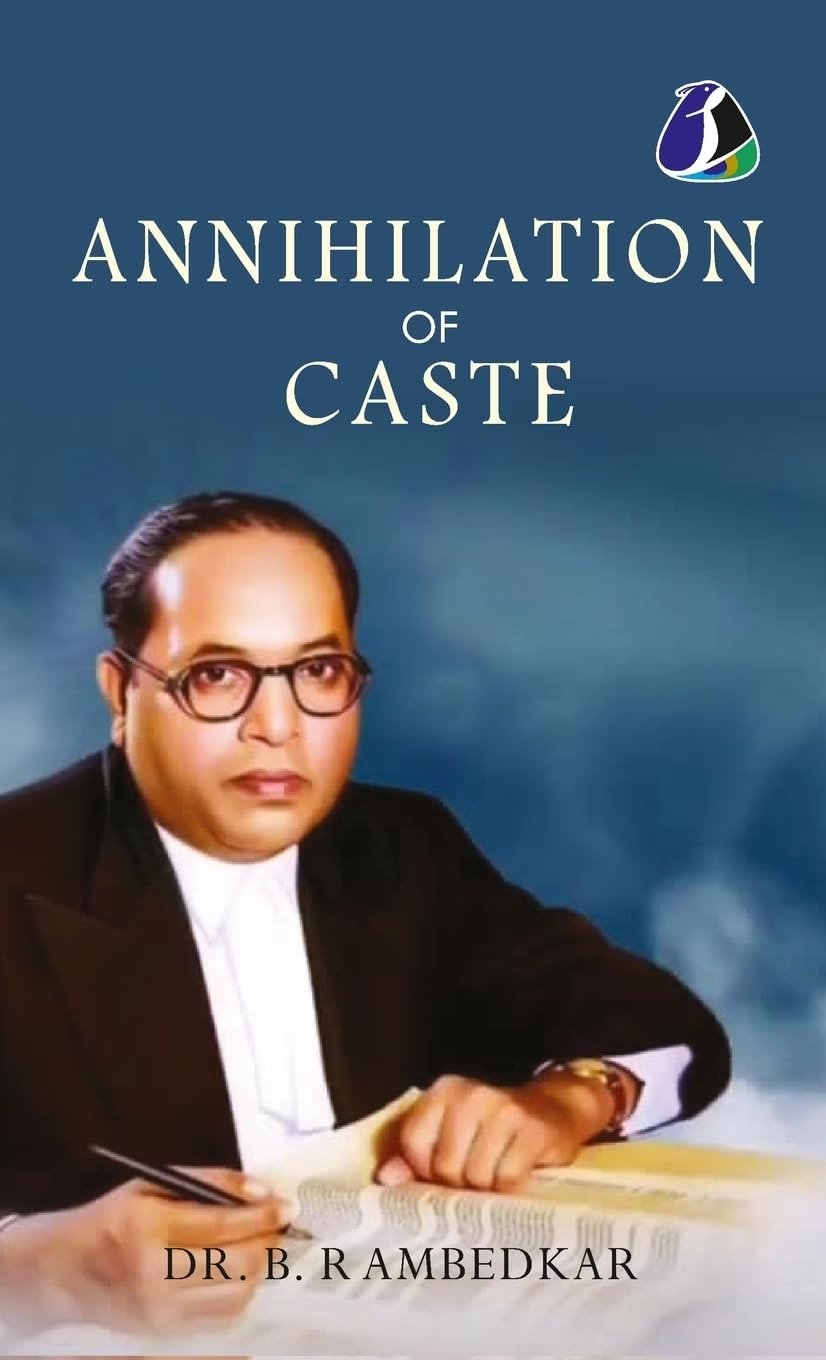
‘Annihilation of Caste’ is a thought-provoking and revolutionary work by Dr B R Ambedkar, one of the most influential figures in Indian history. Originally written as a speech for a conference in 1936, The Book challenges the deep-rooted caste system in India and the social hierarchy it creates. Dr Ambedkar argues that the caste system perpetuates social and economic inequality, and impedes progress and growth for the nation as a whole. He presents a compelling case for the annihilation of caste and the creation of a society based on principles of equality and justice. This book remains a powerful and influential critique of caste and a call to action for social justice and equality in India and beyond and continues to inspire activists and intellectuals to work towards a more just and equitable world.
He argued that the caste system, with its inherent discrimination and inequality, was not a mere social aberration but was deeply embedded within the religious framework of Hinduism. His analysis was based on historical evidence and the lived experiences of the oppressed.
For example, his engagement with texts like the Manusmriti, which he famously burned in effigy, was to expose the religious sanction given to caste discrimination. Shourie’s comparison attempts to deflect from the substance of Ambedkar’s critique by drawing a spurious parallel with Nazi ideology, a tactic that ignores the specific historical and social context of caste in India.
The Role of Missionaries: A Misplaced Analogy
Shourie also suggests that Ambedkar’s views on caste were influenced by Christian missionaries, implying that his criticism of Hinduism was driven by external agendas.
This argument dismisses Ambedkar’s own intellectual journey and his independent research. Ambedkar’s conversion to Buddhism later in his life was a culmination of his long search for a religion that preached equality and human dignity. He found solace and inspiration in Buddhism’s emphasis on social justice and its rejection of caste hierarchies.
His writings and speeches clearly indicate that his conversion was a deeply personal and intellectual decision, aimed at finding a spiritual and ethical framework that aligned with his principles of social equality. To attribute this profound personal and intellectual choice to missionary influence is to undermine his agency and the authenticity of his convictions.
The Reality of Caste Discrimination: A Lived Experience
Shourie’s perspective, some critics argue, fails to acknowledge the brutal realities of caste discrimination. Ambedkar’s analysis was grounded in the empirical evidence of centuries of oppression faced by Dalits, including denial of basic rights like access to water, entry into temples, and educational opportunities.
His writings detail the systematic dehumanization and exploitation inherent in the caste system. For instance, the inability of Dalits to drink water from public wells, as highlighted in the Mahad Satyagraha, or the practice of carrying human excreta, were not abstract philosophical points but lived realities that Ambedkar sought to eradicate.
Shourie’s position, which questions the extent and nature of this discrimination, is seen by many as detached from the ground realities and the historical suffering of Dalits.
Ambedkar’s Electoral Performance: Context and Causality
The Limited Franchise and Electoral Disenfranchisement
The assertion that Dr. Ambedkar and his party suffered electoral defeats, and that this undermines his political standing, requires a deeper understanding of the electoral system of the pre-independence era. The franchise was severely limited, with voting rights restricted based on property ownership, income, and literacy.
According to the Government of India Act of 1935, only about 13% of the population was eligible to vote. This meant that the electorate was largely composed of the landed gentry, educated elites, and members of the dominant castes.
For a leader like Ambedkar, representing the disenfranchised and marginalized Dalits, who constituted a significant portion of the population but had minimal electoral power due to these restrictions, winning elections was an uphill battle. The system was inherently designed to favor established political forces and did not provide a level playing field for emerging Dalit leadership.
Separate Electorates vs. Reserved Constituencies: A Strategic Debate
Ambedkar’s demand for ‘separate electorates’ for Dalits, similar to those granted to Muslims, Sikhs, and others, was a strategic move to ensure genuine political representation and safeguard Dalit interests.
He argued that reserved constituencies, where Dalits would vote for candidates nominated by the dominant castes, would not guarantee true representation. Separate electorates, he believed, would empower Dalits to elect their own representatives who would be accountable to the community.
Mahatma Gandhi, fearing that separate electorates would further divide the Hindu community and potentially weaken the nationalist movement, vehemently opposed this demand. The subsequent Poona Pact of 1932, brokered by Gandhi and Ambedkar, replaced separate electorates with a system of ‘joint electorates’ with reserved seats.
While this ensured some Dalit representation, critics argue that it kept Dalits politically dependent on the larger, caste-dominated parties, thereby limiting their autonomy and bargaining power. Shourie’s critique often presents this as Ambedkar’s political failure, ignoring the strategic implications and the subsequent impact on Dalit political agency.
The Congress’s Political Maneuvering
The Indian National Congress, under Gandhi’s leadership, actively worked to counter Ambedkar’s political influence. Gandhi’s fast unto death against the Poona Pact’s separate electorates was a powerful political maneuver that put immense pressure on Ambedkar and the Dalit community.
While presented as a move to preserve Hindu unity, it effectively undermined Ambedkar’s demand for self-determination. Shourie’s narrative often overlooks the political calculations and strategies employed by the Congress, which were aimed at maintaining the existing power structures while co-opting Dalit leadership within their framework.
The Congress’s dominant position in the political landscape, coupled with its control over resources and its appeal to nationalist sentiments, made it extremely difficult for independent Dalit political movements to gain significant electoral traction.
Addressing Shourie’s Allegations on the Constitution
Ambedkar as the ‘Father of the Constitution’
One of Shourie’s most persistent claims is that Dr. Ambedkar cannot be solely credited as the ‘Father of the Constitution.‘ He argues that the Constitution was a collective effort of the Constituent Assembly and that much of its content was derived from the Government of India Act of 1935.
While it is true that the Constituent Assembly, with its diverse membership, played a crucial role in drafting the Constitution, and that the 1935 Act served as a significant reference, this argument significantly diminishes Ambedkar’s pivotal role as the Chairman of the Drafting Committee.
It was Ambedkar who, with his profound legal acumen and deep understanding of social justice, steered the committee through complex debates, synthesized diverse viewpoints, and gave the Constitution its foundational structure and ethos. His leadership, tireless efforts, and commitment to social justice infused the Constitution with principles of equality, liberty, and fraternity, making it a document that aimed to transform Indian society.
The Influence of the Government of India Act, 1935
Shourie correctly points out that the Government of India Act of 1935 significantly influenced the Indian Constitution, particularly in its administrative and structural aspects. However, this influence does not negate Ambedkar’s contribution; rather, it highlights his pragmatism. Ambedkar, while advocating for a new constitutional framework, recognized the need to build upon existing administrative structures where they were functional and beneficial.
His role was not merely to copy but to adapt, refine, and imbue these structures with democratic and egalitarian principles. He meticulously debated and modified provisions, ensuring that the Constitution addressed the aspirations of the marginalized and provided safeguards against discrimination. His deep engagement with constitutional law, honed through his studies at Columbia and the London School of Economics, allowed him to create a document that was both robust and forward-looking.
The Drafting Committee’s Deliberations
The Drafting Committee, chaired by Ambedkar, met for 114 days, and Ambedkar himself played a central role in the debates and deliberations.
He not only drafted the initial text but also responded to thousands of amendments and suggestions from other members. His ability to articulate complex legal and social issues, his foresight in addressing potential challenges, and his unwavering commitment to social justice were instrumental in shaping the Constitution.
The Constituent Assembly debates are replete with instances where Ambedkar eloquently defended the provisions related to affirmative action, minority rights, and social equality.
To reduce his role to that of a mere ‘drafter’ or a ‘messenger’ is to ignore the intellectual and ideological leadership he provided in creating a Constitution that sought to usher in a new era of social justice in India.
Ambedkar’s Conversion to Buddhism: A Political Act?
The “Annihilation of Caste” and Buddhist Philosophy
Shourie’s assertion that Ambedkar’s conversion to Buddhism was merely a political act, devoid of genuine spiritual or intellectual conviction, is a reductionist view.
Ambedkar’s embrace of Buddhism was the culmination of a lifelong quest for a philosophy that championed equality, compassion, and social justice. He saw Buddhism as a religion that had historically challenged caste and Brahmanical dominance in India. His extensive research into Buddhist scriptures and philosophy led him to believe that Buddhism offered a path to liberation from suffering and oppression, aligning perfectly with his own vision for the upliftment of the Dalits and the creation of a more egalitarian society.
His conversion was not an opportunistic political move but a deeply considered intellectual and spiritual decision based on his profound understanding of Buddhist teachings and their relevance to the Indian context.
The Search for Dignity and Equality
For Ambedkar, the adoption of Buddhism was also a significant act of defiance against the caste system and the religious traditions that perpetuated it. It was a declaration of freedom from the shackles of Hinduism, which he saw as inherently discriminatory.
His famous declaration, “I will not die a Hindu,” symbolized his rejection of a faith that had relegated him and his community to the status of untouchables.
Buddhism, with its emphasis on human dignity and its rejection of ritualism and caste hierarchy, offered an alternative framework for spiritual and social emancipation. It was a choice that provided a sense of identity, pride, and a moral compass for millions of Dalits seeking to break free from centuries of oppression.
The Intellectual and Spiritual Journey
Ambedkar’s conversion was not a sudden or impulsive act. It was the result of decades of study, reflection, and a deep engagement with various religious and philosophical traditions. He meticulously studied Buddhism, comparing its tenets with other religions, and concluded that it best aligned with his ideals of social justice and humanism.
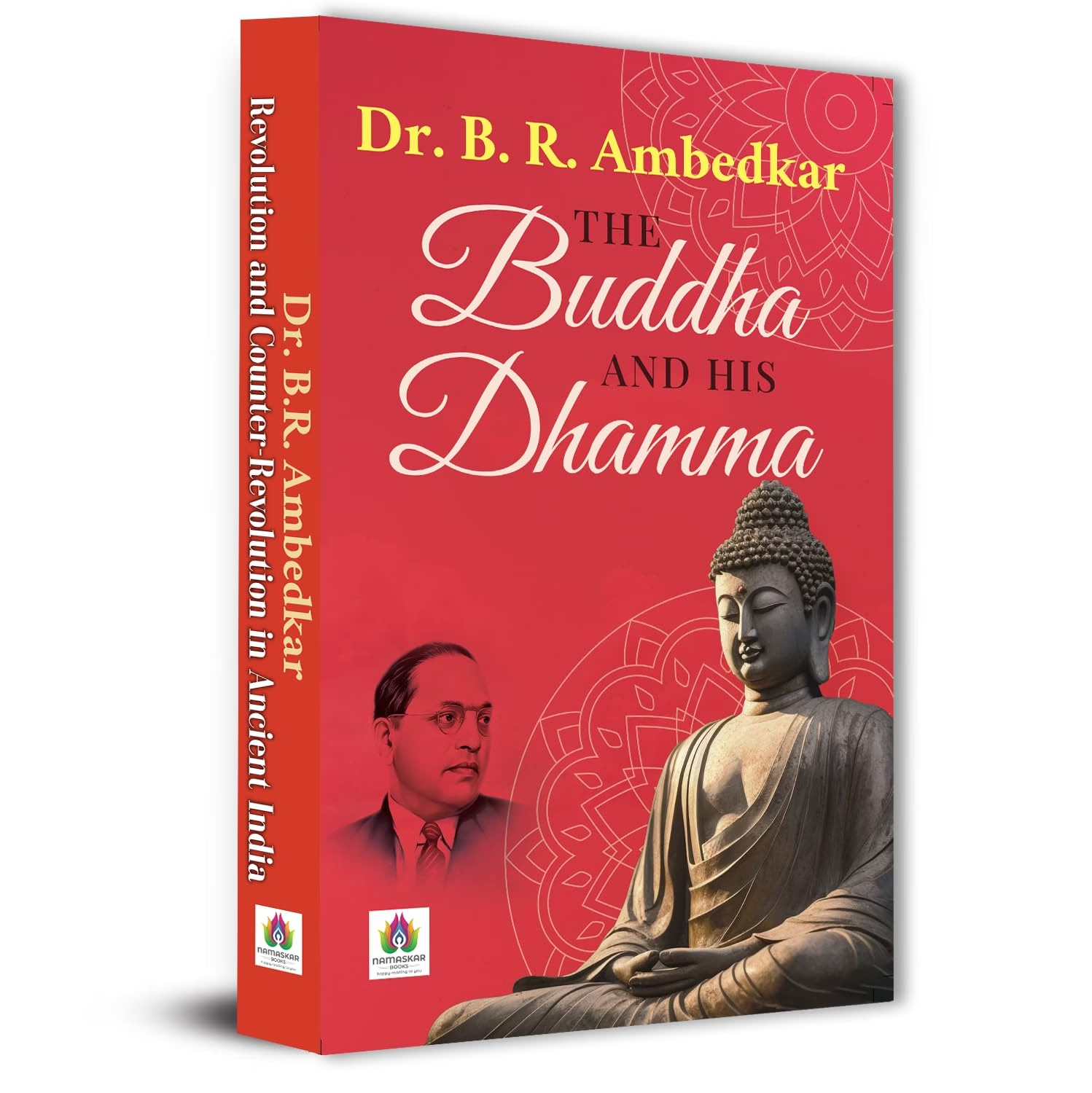
The Buddha and His Dhamma is Dr. B.R. Ambedkar’s final and perhaps most spiritually significant work, offering a detailed exploration of the life, teachings and philosophy of Gautama Buddha. First published in 1957, this book serves as a foundational text for the Navayana or Neo-Buddhist movement, which Ambedkar initiated to promote a version of Buddhism rooted in social justice, equality and compassion.
His final work, ‘The Buddha and His Dhamma’, stands as a testament to his intellectual rigor and his profound understanding of Buddhist philosophy. Shourie’s attempt to dismiss this as a mere political act ignores the depth of Ambedkar’s intellectual and spiritual journey and his commitment to finding a just and humane path for his people.
The “Mahad Satyagraha” and “Kalaram Temple Movement”
Challenging Untouchability in Public Spaces
The Mahad Satyagraha, initiated by Dr. Ambedkar in 1927, was a pivotal moment in the fight against untouchability. It was a direct challenge to the discriminatory practice that barred Dalits from accessing public spaces, including water sources like the Chawdar Tank in Mahad, Kolhapur district.
While dogs and other animals could drink from the tank, Dalits were denied this basic human right. Ambedkar led a procession of Dalits to assert their right to use the tank, a courageous act that faced brutal opposition. The movement was not just about water; it was about reclaiming dignity and asserting equal rights in public life, a fundamental aspect of freedom from social oppression.
Temple Entry as a Fight for Equality
Similarly, the Kalaram Temple movement in Nashik, which Ambedkar led in 1930-31, was another significant struggle for temple entry for Dalits.
The denial of entry into temples was a powerful symbol of the religious and social exclusion faced by Dalits. Ambedkar’s campaigns aimed to dismantle these discriminatory practices and assert the right of Dalits to participate fully in the religious and social life of the community. These struggles were direct confrontations with the caste system and the religious justifications used to uphold it, making them integral to the broader fight for liberation and equality.
Ambedkar’s Stance on Partition
Advocating for Partition for Social Harmony
Dr. Ambedkar’s support for the partition of India, as articulated in his book ‘Thoughts on Pakistan’, is often misrepresented as a betrayal of national unity. However, Ambedkar’s position was rooted in a pragmatic assessment of the socio-political realities of the time. He observed the deep-seated animosity between Hindus and Muslims and the persistent communal violence.
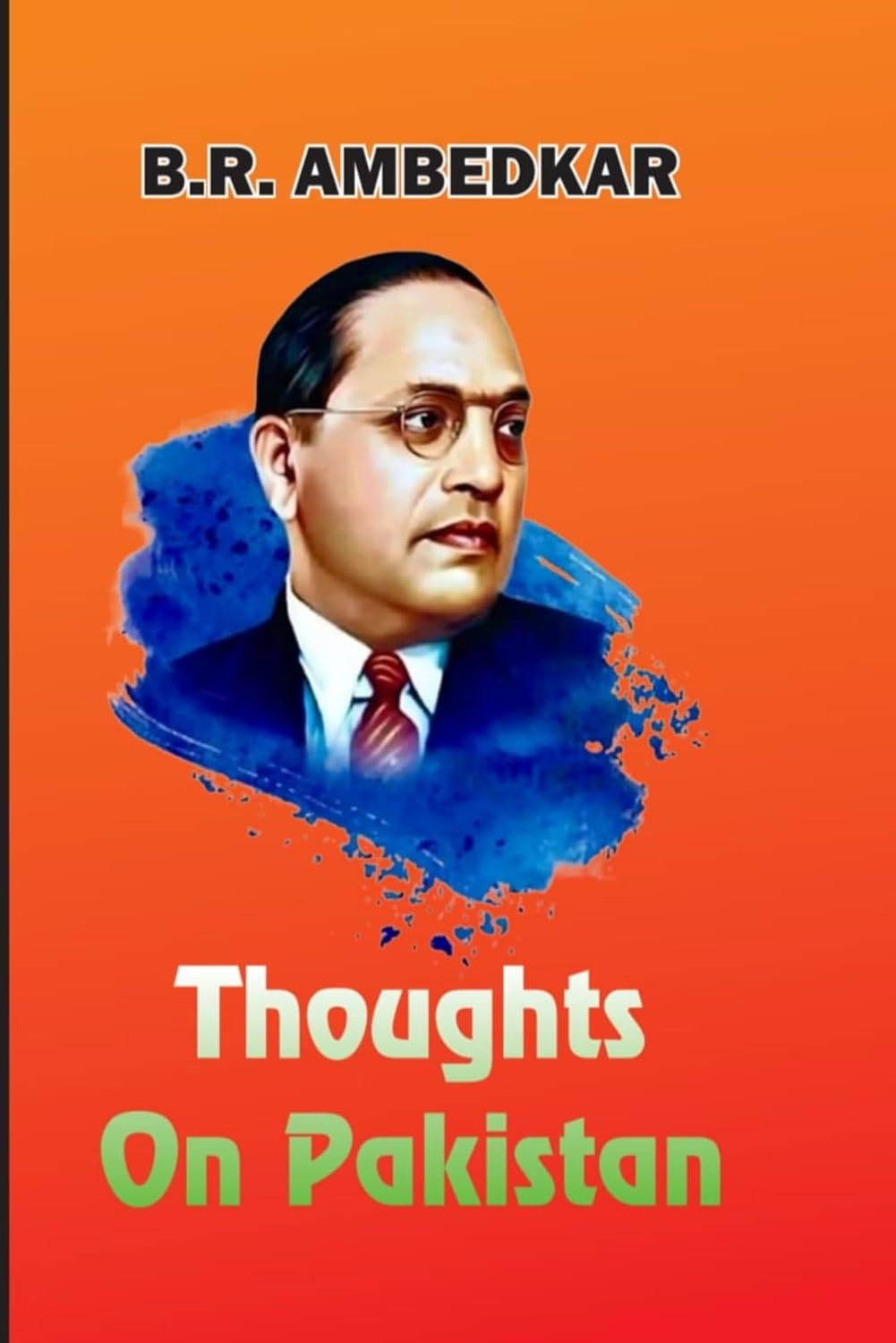
Book overview Engage with the profound reflections in “Thoughts On Pakistan: Reflections on the Birth and Identity of a Nation” by Babasaheb Ambedkar, where the complexities of national identity and the socio-political landscape of South Asia are explored with clarity and depth. This thought-provoking work invites readers to examine the historical and ideological underpinnings that shaped Pakistan’s creation and its implications for the future. In this compelling narrative, Ambedkar delves into the philosophical and practical considerations surrounding the formation of Pakistan, addressing critical questions about nationhood, cultural identity, and communal harmony. His analysis offers a unique perspective on the struggles faced by the newly formed nation and the broader implications for the Indian subcontinent. Central themes include the challenges of national unity, the impact of colonialism, and the dynamics of religious identity.
He argued that given the unbridgeable gulf and the history of conflict, a peaceful coexistence within a united India seemed improbable and he believed that a separation, though painful, might ultimately lead to greater social harmony and stability for both communities, preventing perpetual strife and bloodshed. His support for partition was not driven by religious bias but by a desire to find a workable solution to the intractable communal problem.
Critique of Hindu Nationalism and Congress’s Role
Ambedkar was also critical of both Hindu nationalism and the Indian National Congress’s approach to the communal question. He felt that the Congress, while advocating for a united India, was not adequately addressing the legitimate grievances of the Muslim minority. He also critiqued the underlying Hindu nationalist sentiments within the Congress, which he believed could lead to the marginalization of minority communities in an independent India.
His writings suggest a concern that in a Hindu-majority independent India, the Dalits and other minorities might face continued subjugation under a different guise. His stance on partition, therefore, was also a reflection of his broader concerns about safeguarding the rights and interests of all communities in the future Indian state.
Shourie’s Allegations of Corruption and Misuse of Funds
The M.N. Roy Controversy: A Factual Examination
One of Shourie’s more serious allegations is that Dr. Ambedkar, as Labour Minister, misused funds by directing payments to M.N. Roy and his publications. Shourie claims that Roy received Rs. 13,000 per month from Ambedkar’s ministry for his journals and alleged spy activities against nationalists.
This claim appears to be a fabrication unsubstantiated by any credible historical evidence. Ambedkar’s political differences with M.N. Roy and the communist movement are well-documented.
Roy was a Marxist intellectual who later diverged from mainstream communism, and Ambedkar’s own political philosophy was distinct. There is no record of Ambedkar’s ministry providing funds to Roy in the manner alleged by Shourie. In fact, Ambedkar was known for his integrity and his commitment to clean governance. Such allegations often surface as attempts to tarnish the image of leaders who challenge established norms.
Lack of Evidence and Cherry-Picking
The allegations regarding financial impropriety are largely based on what appears to be selective interpretation or fabrication of historical records.
Critics point out that Shourie often relies on obscure or unverified sources, or quotes selectively from documents, to build his case. The absence of corroborating evidence from official records, parliamentary debates, or contemporary accounts makes these allegations highly suspect.
Furthermore, Shourie’s claim that Ambedkar could not adequately answer questions in the assembly regarding these payments lacks substantiation. Ambedkar, as a vocal and articulate parliamentarian, would have faced significant scrutiny if such financial irregularities were indeed occurring. The lack of contemporary reports detailing such controversies further weakens Shourie’s claims.
Debunking the “British Stooge” Narrative
Ambedkar’s Appointment to the Viceroy’s Council
Shourie’s argument that Ambedkar’s appointment as Labour Member in the Viceroy’s Executive Council in 1942 was a deliberate move by the British to counter the Congress and the ‘Quit India’ movement is a simplistic interpretation.
While Ambedkar was appointed during a critical juncture, his inclusion was part of a broader strategy by the British to broaden Indian participation in the governance structures amidst the pressures of World War II.
It is important to note that other prominent Indians, including those with Congress leanings or affiliations, were also engaged with by the British during this period. Ambedkar’s appointment was also a recognition of his intellectual prowess and his commitment to labor welfare, areas he had consistently championed. It was not solely an anti-Congress ploy.
Selective Criticism: The Hypocrisy of Accusation
A significant flaw in Shourie’s narrative is its selective application of the ‘stooge’ label. Critics view Shourie’s work as a concerted effort to delegitimize Ambedkar. While Ambedkar’s appointment to the Viceroy’s Council is portrayed as collaboration, Shourie often overlooks or downplays the fact that many prominent leaders, including those associated with the Congress and nationalist movements, had also served in British administrative structures, received titles, or accepted positions within the colonial government at various points. [
Mahatma Gandhi himself received the title of ‘Mahatma’ and engaged in dialogues with the British, and Rabindranath Tagore accepted the knighthood (which he later renounced). Shourie’s focus on Ambedkar’s appointment as evidence of ‘stoogery’ while excusing similar or even more direct collaborations by others reveals a clear bias.
This selective accusation highlights Shourie’s apparent discomfort with Ambedkar’s independent political trajectory and his success in carving out a distinct space for Dalit representation outside the mainstream Congress narrative.
Ambedkar’s Pragmatism vs. Uncritical Support
Ambedkar’s approach was always pragmatic. He believed in engaging with power structures to achieve substantive reform for the marginalized.
His role as Labour Member allowed him to introduce significant labor legislation and advocate for workers’ rights. This was not about unconditional support for the British but about using the available platform to advance the cause of the downtrodden. He consistently criticized British policies when they were detrimental to Indian interests or failed to address social injustices.
The accusation of being a ‘stooge’ overlooks the complexities of political negotiation and the strategic choices leaders make in challenging circumstances. Ambedkar’s actions must be viewed in the context of his primary goal: the emancipation of Dalits and the creation of a just society.
Analyzing Shourie’s Views on the Bengal Famine and ‘Quit India’ Movement
Ambedkar’s Critique of Famine Policies
Shourie alleges that Dr. Ambedkar did not criticize the British government’s policies during the devastating Bengal Famine of 1943. This assertion is factually incorrect. Ambedkar, in his book ‘Pakistan or The Partition of India’ (1945) and in his testimony before the Famine Inquiry Commission in 1945, did indeed critique the British government’s policies, which he believed exacerbated the famine.
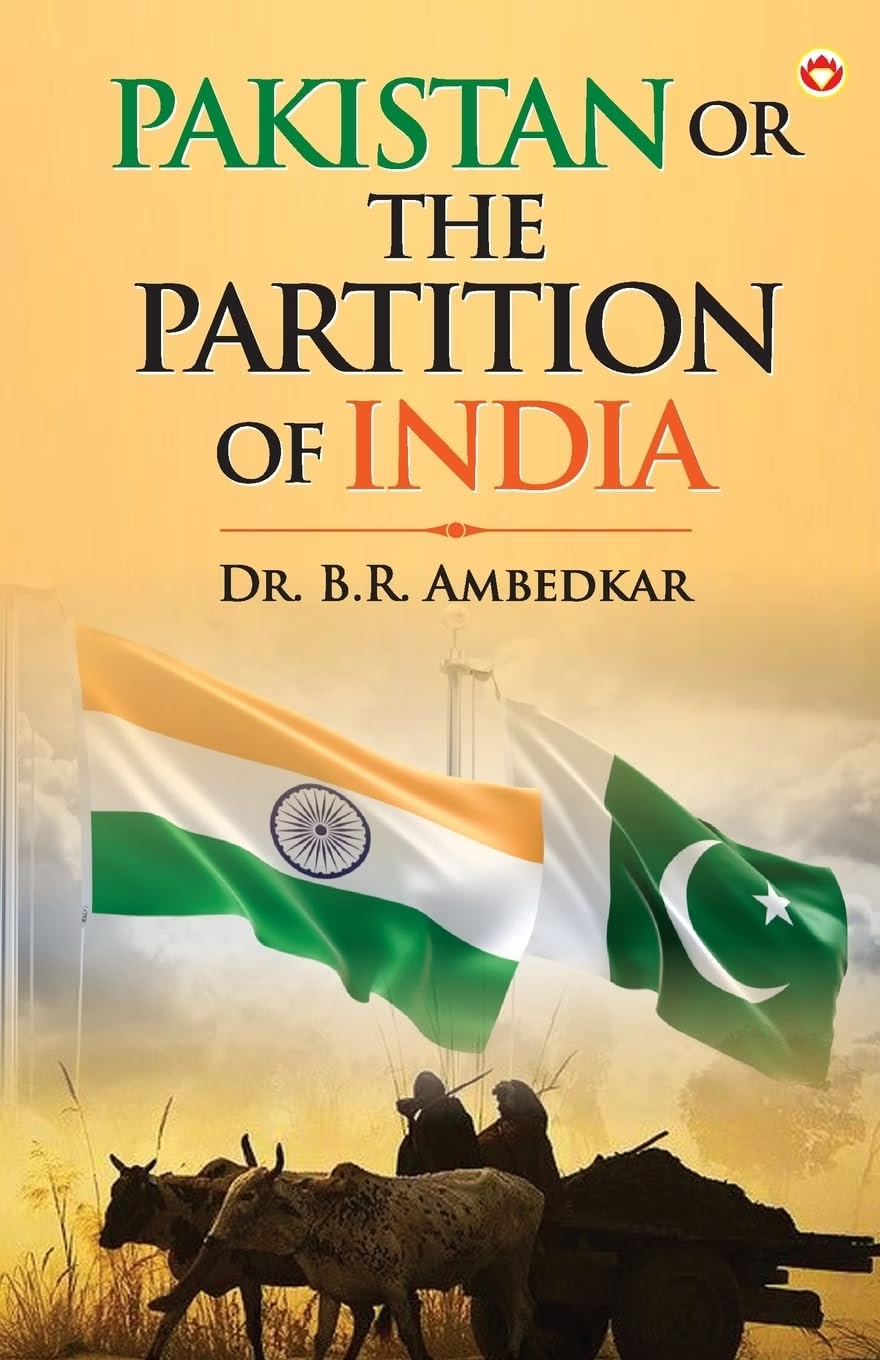
The Muslim Leagued Resolution on Pakistan has called forth different reactions. There are some who look upon it as a case of political measles to which a people in the infancy of their conscious unity and power are very liable. Others have taken it as a permanent frame of the Muslim mind and not merely a passing phase and have in consequence been greatly perturbed.
My position in this behalf is definite, if not singular. I do not think the demand for Pakistan is the result of mere political distemper, which will pass away with the efflux of time. As I read the situation, it seems to me that it is a characteristic in the biological sense of the term, which the Muslim body politic has developed in the same manner as an organism develops a characteristic. Whether it will survive or not, in the process of natural selection, must depend upon the forces that may become operative in the struggle for existence between Hindus and Musalmans. I am not staggered by Pakistan.
He pointed to the government’s failure to control food hoarding, inflation, and the inefficient distribution of relief as major contributing factors to the catastrophe. While his critique may not have matched the revolutionary fervor of some nationalist calls, it was a well-reasoned and evidence-based indictment of the colonial administration’s handling of the crisis. Shourie’s claim that Ambedkar remained silent is a misrepresentation of his documented views.
Ambedkar’s Stance on the ‘Quit India’ Movement
Shourie further alleges that Ambedkar was critical of the ‘Quit India’ Movement and that he supported the British decision to arrest Congress leaders.
Ambedkar’s position on the ‘Quit India’ Movement was indeed critical, but not out of loyalty to the British. He believed that the movement, launched during World War II without adequate planning or consideration for the potential consequences, would lead to widespread anarchy and violence, disproportionately affecting the vulnerable sections of society, including Dalits.
He expressed concerns that such instability would hinder any progress towards achieving social justice and political rights for the marginalized. Can one truly claim to fight for freedom by only focusing on electoral politics, or does the liberation of millions from social and economic chains constitute a more profound struggle?
He advocated for a more structured approach to achieving independence, one that prioritized social reforms and ensured the safety and rights of all communities. His criticism was aimed at the movement’s potential to unleash chaos, not at supporting the British regime itself.
The Reality of Gandhi’s Role and Ambedkar’s Concerns
Furthermore, Shourie’s narrative concerning Gandhi’s fast and Ambedkar’s alleged wish for Gandhi’s demise is particularly inflammatory and lacks any factual basis.
Historical records show that Ambedkar expressed concern for Gandhi’s health during his fast, recognizing his significance in the national movement, even while disagreeing with his methods.
The idea that Ambedkar desired Gandhi’s death, or that the British shared such a sentiment and acted upon it by keeping Ambedkar in their council, is a wild conspiracy theory unsupported by evidence. Gandhi’s fasts were often strategic political tools, and his near-death experiences were well-documented. Ambedkar’s response was one of concern, not malice.
Conclusion: The Imperative of Factual Discourse
Arun Shourie’s ‘Worshipping False Gods’, while presenting itself as a critical analysis, often relies on selective interpretation, decontextualization of facts, and unsubstantiated allegations. The book’s recurring themes – Ambedkar’s alleged anti-nationalism, his political failures, his supposed hatred of Hinduism, and his opportunistic conversion to Buddhism – crumble under factual scrutiny when viewed in the broader historical and social context.
Shourie’s critique often overlooks the systemic oppression that shaped Ambedkar’s activism and the pragmatic, yet principled, approach he adopted to achieve liberation for the Dalits and other marginalized communities.
His approach to Ambedkar’s life is akin to a chef picking only the bitter herbs from a garden and claiming the entire harvest is unpalatable, ignoring the sweet fruits and nourishing vegetables.
What can you do?
To truly understand Dr. B.R. Ambedkar’s legacy and contributions, it is essential to engage with his original works, read scholarly analyses that provide historical context, and critically evaluate the arguments presented by critics like Arun Shourie. Encourage critical thinking and fact-checking, especially when encountering information online that seeks to denigrate Ambedkar.
Support educational initiatives that promote a nuanced understanding of India’s social and political history, ensuring that the voices and struggles of all communities are recognized and respected. Engage in informed discussions and challenge misinformation wherever it appears, advocating for a discourse grounded in historical accuracy and respect for all figures who have contributed to India’s progress.
Disclaimer: Understanding Key Terms
- Shudra: Traditionally, the fourth varna in the Hindu caste system, often associated with manual labor and servitude. In contemporary discourse, it is used to refer to castes historically subjected to discrimination and oppression.
- Savarna: Refers to the upper castes in the Hindu varna system, traditionally holding positions of privilege and power.
- Dalit: A term adopted by the formerly ‘untouchable’ communities, meaning ‘oppressed’ or ‘broken.’ It signifies a collective identity and a rejection of the derogatory terms previously used.
- Ambedkarite: Followers and supporters of Dr. B.R. Ambedkar’s ideology and movement, advocating for social justice, equality, and the annihilation of caste.
- Brahmanical: Pertaining to the Brahmins, the priestly and scholarly varna, and the ideology and practices associated with their dominance in the caste hierarchy and religious traditions.
- Hindu Nationalist: An individual or group that advocates for a political identity rooted in Hindu culture and values, often emphasizing the primacy of Hinduism in Indian national life.
- Paralegal: Pertaining to the law, but not formally qualified or authorized to act as a lawyer. In this context, it might refer to individuals who engage in legal discourse or analysis without formal legal standing.
Read more about Dr. Ambedkar’s Labor Legacy: New Codes & Workers’ Rights
Find out more about Dr. Ambedkar’s Vision on Sex Education & Individual Freedom
Do you disagree with this article? If you have strong evidence to back up your claims, we invite you to join our live debates every Sunday, Tuesday, and Thursday on YouTube. Let’s engage in a respectful, evidence-based discussion to uncover the truth. Watch the latest debate on this topic below and share your perspective!
